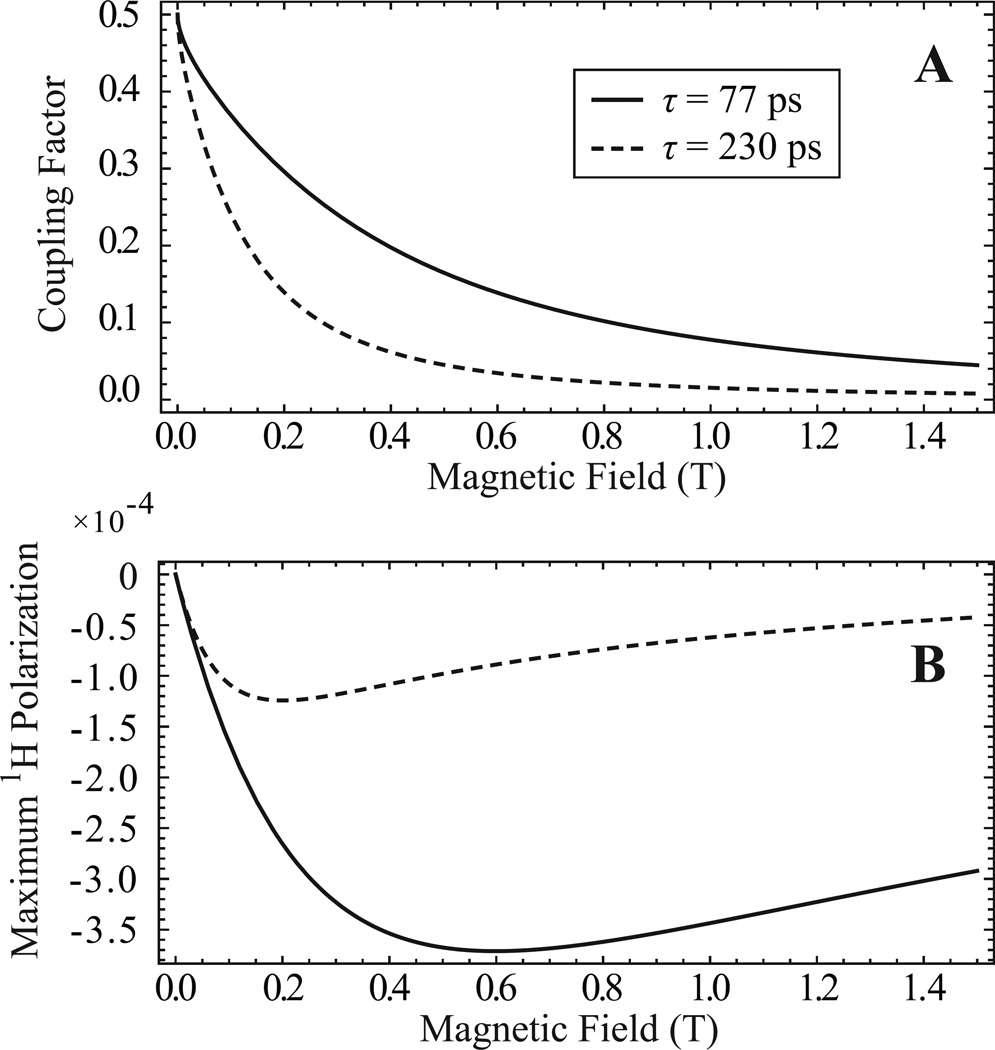Figure 1.
(A) Theoretical plot of the coupling factor ρ as a function of magnetic field for two representative translational correlation times, τ = 77 ps (solid trace) and τ = 230 ps (dashed trace). The choice of correlation times is explained in the text. From the correlation times, the coupling factors were calculated using equations in the literature [8] with the hard sphere force-free model [29,30], which has been shown to effectively describe nitroxides dissolved in water [28]. (B) Plot of the maximum enhanced 1H nuclear polarization that is possible through Overhauser DNP as a function of magnetic field, assuming smax = 1 and f = 1. Again the solid and dashed traces represent τ = 77 ps and τ = 230 ps, respectively. This plot was calculated by placing the field dependence of the coupling factor into Eq. [1] and multiplying by the 1H thermal polarization as a function of field. When considering both the Overhauser DNP efficiency and initial thermal polarization, the highest possible nuclear polarization of −3.7×10−4 is obtained at 0.60 T with τ = 77 ps while the optimum field for τ = 230 ps is 0.20 T.

